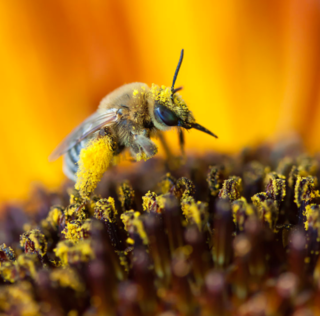Self-Harm
Allergies and Self-injury
Intriguing links between seemingly unrelated pollen counts and self harm.
Posted December 31, 2016

Suicide is a leading cause of death among young adults, and yet it still remains rare enough that it is difficult to study, making prediction and prevention difficult. Self-directed violence, including cutting and nonfatal suicide attempts, is far more common, leading to 678,000 or so emergency department visits in the US in 2008. Since self-directed violence itself is one of the strongest risk factors for eventual death by suicide, studying the causes of these events may help us understand and perhaps prevent suicide in the future.
We do know that both suicide and self-harm tend to have seasonal peaks, with highest rates in the springtime. There are many hypotheses as to environmental factors that may account for the springtime peak, including low vitamin D levels, the return of light bringing energy but not happiness, to depressed individuals, temperature changes, and even allergies. It's the last link that the researchers who wrote the intriguing paper, "Temporal Association Between Nonfatal Self-Directed Violence and Tree and Grass Pollen Counts" sought to clarify. They examined the emergency room records of Parkland Hospital (a public hospital in Dallas, TX) from January 2000-December 2003 and also the measured pollen levels in Dallas during the same timeframe.
For women, but not men, there was a significant increase in violent self-harm events that presented to the emergency room on the day of and day after high pollen counts. If pollen counts (grass, trees, and ragweed) was higher than 1000 grains per cubic meter of air, these emergency room visits increased by 56-57% among women. The increase dropped off as the pollen count did...within a day or so of the high levels. A large US county study and another Danish study found a similar link between completed suicides and tree pollen counts among women.
Why on earth would the pollen count be correlated with self-injury or suicide? And why only women? Well, there is a link between depression and inflammation in the body, and allergies are one form of inflammation. There is a reasonable theory that key symptoms of depressive disorders such as social avoidance, low motivation and energy, and low mood are related to similar symptoms we experience during medical illness, and elevations of inflammatory cytokines such as IL-6 can be found in depressed people as well as those who are physically sick. It's not that big of a stretch to think that massive amounts of pollen leading to an allergic reaction in the body could cause those troubled individuals already vulnerable to self-harm to tip over into acting on those urges. In fact, one study showed a correlation between treating allergies with anti-inflammatory inhaled steroids and a decrease in suicide rates.
Certainly we can't extrapolate world-wide about non-fatal self-directed violence from a single study from a single hospital in Dallas County...it would be fascinating to see the researchers in countries with socialized medicine apply their statistical power to this question...provided they have variable pollen counts in the region. In any event this strange link between pollen, allergies, suicide, and self-directed violence seems to keep cropping up, and perhaps methods of decreasing allergies could also help decrease self-harm?
Copyright Emily Deans MD


